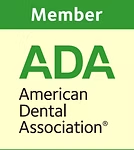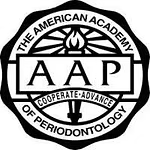Basic Home Care in Spring

As your dentists, we are a member of your oral health team. The success of you having no cavities and healthy gums is mainly decided by how well you practice good oral care at home.
Brushing your teeth twice a day with an ADA accepted fluoride toothpaste and cleaning between your teeth once a day are both important. Patients often say that they just don’t have the time. You can clean between your teeth at any point in the day. It’s easier than ever thanks to the variety of products, such as, floss, tooth picks and water flossers.
What's the correct way to brush?
- Typically, you should choose a toothbrush with soft, nylon bristles that are smooth and rounded.
- Be sure to replace your toothbrush every three months to minimize harmful bacteria buildup that can cause colds, flu viruses or gum disease.
- Place the head of the toothbrush next to your teeth, with the bristle tips at a 45-degree angle next to the gumline.
- Move the brush back and forth in a small circular scrubbing motion.
- Brush the outer surfaces of all teeth, upper and lower. Make sure you keep the bristles angled against your gumline.
- Now brush the inside tooth surfaces, using the same brush strokes.
- To reach the inside surfaces of your front teeth, tilt your brush vertically and use gentle, up-and-down stroked with the head of the brush.
- Scrub the chewing surfaces of all back teeth.
- Brush the tongue from back to front to remove odor-producing bacteria.
How do I remove plaque by flossing?
Plaque is a bacteria-laden white substance which forms on the teeth and contributes to tooth decay, gum disease and bad breath. Effective flossing will help remove plaque missed by brushing before it contributes to these harmful effects. Here's how to floss:
- Use a piece of dental floss approximately 18 inches long. Wind each end of the floss around your middle fingers.
- Holding the floss tightly between your thumbs and forefingers, leave about 1" to 2" of floss. Use gentle, back and forth motion to guide the floss in between your teeth. Avoid snapping the floss, which may cause unnecessary irritation to the gums.
- When you floss is at the gumline, curve it into an arc around each tooth until there is mild resistance.
- Holding the floss in the arc position, gently, slide it up the side of the tooth, making sure the floss goes under the gumline. Move the floss up and down (not back and forth) several times to remove the plaque from under the gum.
- Repeat this procedure on both sides of each tooth.
Your choice of foods and beverages is another key to good oral health. Eat a balanced diet and limit between-meal snacks. A steady diet of sugary foods and drinks, including sports drinks, can ruin teeth, especially if you snack throughout the day. When sugar is consumed regularly, the harmful effect on teeth can be dramatic. Once a tooth decays, the enamel does not grow back. The only option when decay happens is to have the tooth treated.
Smoking or using tobacco in any form also harms your oral health. Not only do smokers have a higher risk for cancer and other life-threatening diseases, but tobacco use can also cause periodontal (gum) disease. If you smoke and you want to quit, we can talk about treatment options and decide on the best course of action for you.
By taking care of your teeth, eating a balanced diet and having regular dental visits, you can have a beautiful smile for life. If you have any questions or concerns, please do not hesitate to contact us.









